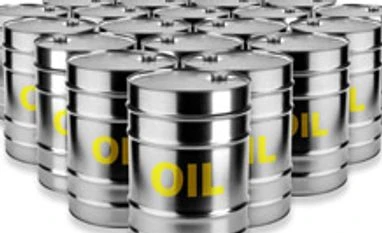Raising slightly its estimate for global consumption of oil this year because of unexpectedly strong European demand, the International Energy Agency said that the oil price fall had been "especially dramatic".
The IEA said in its monthly review of the oil market: "Oil prices have staged a spectacular reversal since their summer rally."
Also Read
Noting that prices for oil on futures markets had plunged by more than $15 dollars per barrel at the end of October and into November, the agency highlighted four main factors.
These were: a deal with Syria over chemical weapons early in September; hopes of a breakthrough in nuclear talks with Iran; unusually strong seasonal factors; and "record high non-OPEC output".
Under the headline "Riding the roller coaster", the agency said that market commentators, who had blamed high prices on "a Syrian 'risk premium'", had then placed their hopes on "an Iranian 'peace dividend'".
It said: "A string of Middle East news headlines served as a backdrop for this roller coaster," given that, previously, military strikes against Syria had appeared to be imminent.
But given usual uncertainty about the winter weather pattern in the northern hemisphere, which has a big effect on demand for heating fuel, and about geopolitics, "the market might not be at the end of its roller coaster ride," the IEA warned.
The agency, which had stressed again on Tuesday the huge changes arising from development of shale reserves in North America, said that this year seasonal swings in supply and demand had been "especially dramatic".
These swings had been compounded by big structural changes in supplies of hydrocarbon energy and in global refining. These factors had also been "a powerful driver" of easing tensions on the oil market, it said.
The IEA, the energy monitoring and policy arm of the 34-member Organisation for Economic Cooperation and Development, raised its estimate for growth of global oil demand this year by 45,000 barrels per day to about 1.0 million barrels per day (mbd), taking total demand to 91.0 mbd.
You’ve hit your limit of 5 free articles this month.
Subscribe now for unlimited access.
Already subscribed? Log in
Subscribe to read the full story →

Smart Quarterly
₹900
3 Months
₹300/Month
Smart Essential
₹2,700
1 Year
₹225/Month
Super Saver
₹3,900
2 Years
₹162/Month
Renews automatically, cancel anytime
Here’s what’s included in our digital subscription plans
Access to Exclusive Premium Stories Online
Over 30 behind the paywall stories daily, handpicked by our editors for subscribers


Complimentary Access to The New York Times
News, Games, Cooking, Audio, Wirecutter & The Athletic
Business Standard Epaper
Digital replica of our daily newspaper — with options to read, save, and share


Curated Newsletters
Insights on markets, finance, politics, tech, and more delivered to your inbox
Market Analysis & Investment Insights
In-depth market analysis & insights with access to The Smart Investor


Archives
Repository of articles and publications dating back to 1997
Ad-free Reading
Uninterrupted reading experience with no advertisements


Seamless Access Across All Devices
Access Business Standard across devices — mobile, tablet, or PC, via web or app



)
